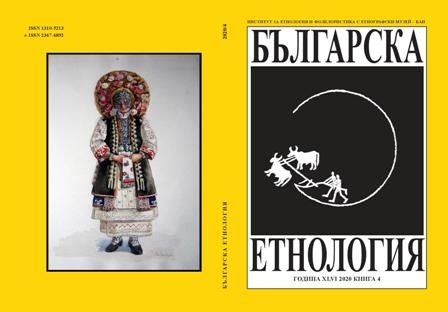Съвременният етнографски музей: на кого принадлежи?
The Contemporary Ethnographic Museum: To Whom does it Belong?
Author(s): Bojana R. ŠkafarSubject(s): Anthropology, Social Sciences, Museology & Heritage Studies, Customs / Folklore, Library and Information Science, Cultural Anthropology / Ethnology, Culture and social structure
Published by: Институт за етнология и фолклористика с Етнографски музей при БАН
Keywords: Participation; inclusion; ethnological museums; Slovene ethnographic museum
Summary/Abstract: While considering the role of the museum in connection with the experiences and interpretations of bearers of museum activities we should take a look at its contemporary social role and position. In this paper the case of the Slovene Ethnographic Museum(SEM) as the main national ethnological museum in Slovenia is taken, offering three504 / Българска етнология, бр. 4 (2020)examples in details. The SEM’s practises are concerned in the light of the ICOM’snew definition of the museum discussed at the last ICOM’s 25th General Conference in Kyoto (2019). The proposed new definition did not gain the support of the majority of the ICOM General Conference participants. The main reason for it not being accepted was that it did not include a mention of the fundamental museum activities, among them the educational function. It is a fact that the platform of museum activities in the 21st century is considerably wider than that communicated by the definition from2007 and that social conditions call for it to be changed, based on the conditions in the modern world, marked by climate change, the destruction of nature, social inequality, lack of economic opportunities, migrations, discrimination, conflicts and wars, non-transparency and the lack of credibility of the ruling structures. The new definition that will satisfy most museum experts in the world will undoubtedly have to reflect the social reality in which museums function and are faced with daily, which will establish the role of museums as socially relevant institutions. But the content defining museums as educational and research institutions that are generators of knowledge about the heritage of the past for the present and the future as well as a creative inspiration should not be neglected. The SEM has now been led by these principles for twenty years. In the article, three examples are presented to describe SEM’s activities on the field of contemporary practises regarding the creative relationship between curators and interlocutors: co-called personal exhibitions that take place under the title My Life, My World, which are structurally and thematically connected to the permanent exhibition I, We and Others: Images of my World, project accessibility of Cultural Heritage to Vulnerable Groups and exhibition Africa and Slovenia, A Web of People and Objects that was developed within the SWICH project.
Journal: Българска етнология
- Issue Year: 2020
- Issue No: 4
- Page Range: 490-504
- Page Count: 15
- Language: Bulgarian

